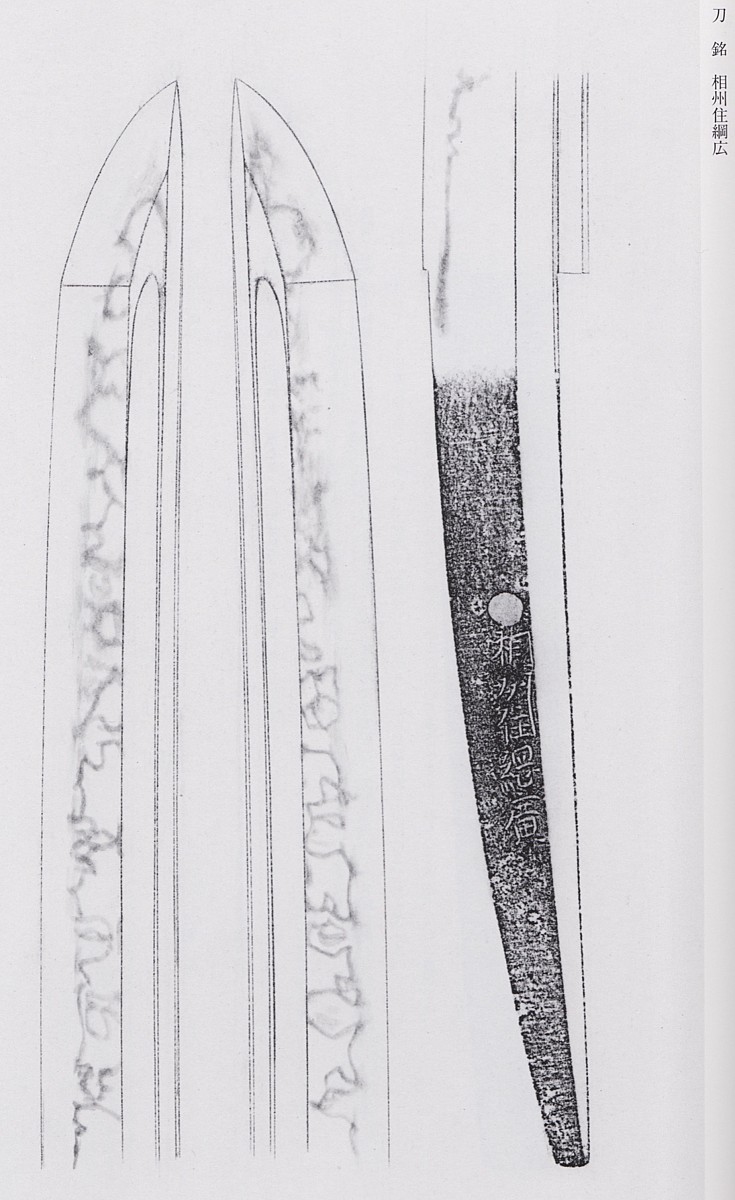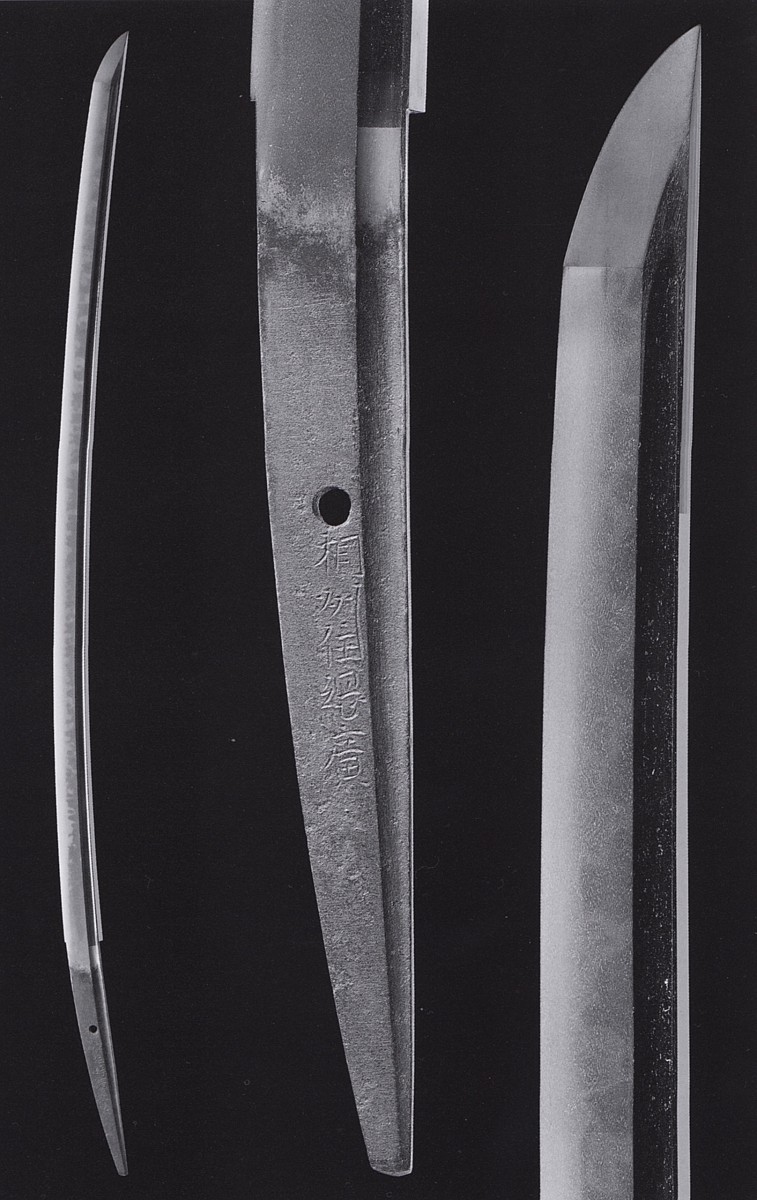Tsunahiro (綱廣) 3rd generation, activity around Bunroku era (文禄, 1592-1596), Sagami province, signatures variants: Sōshū-jū Tsunahiro (相州住綱廣); Tsunahiro (綱廣); Sagami (no) Kuni-jūnin Tsurugaoka ni oite Tsunahiro kore o tsukuru“ (相模国住人於鶴岡綱廣造之); one of 300 swords were made by Sōshū Tsunahiro on the order of Tamenobu, the lord of Tsugaru (津軽主為信相州綱廣呼下作之三百腰之内); name: Yamamura Sō ́emon (no) jō (山村宗右衛門尉); buddhist name: Gyokuyū (玉祐). In the 10th year of the Keichō era (慶長, 1605), he moved in Tsugaru accompanied by several smith and made for Tsugaru Ujinobu (津軽為信, 1550-1608), the edaimyō of the Tsugaru fief, 300 ndaishō katana. It is said that in this work Tsunahiro was helped by Tsunashige (網重) and Morimune (盛宗). Tsunahiro finished his work in the 11th year of the Keichō era (慶長, 1606) and returned to his home in Kamakura Ōgigayatsu (鎌倉扇ケ谷). He died in the 27th day of the second month of 15th year of Kan’ei era (寛永, 1638), at the age of 91. jō-saku.
Jūyō Tōken Sōshū Tsunahiro Katana : nagasa: 74.3 сm; sori: 2.0 сm; motohaba: 2.8 сm; sakihaba: 2.25 cm; motokasane: 2,9 cm; sakikasane: 2.2 cm.
Designated as Jūyō Tōken at the 35th jūyō-shinsa held on the 14th of April, 1989.
Publications: NBTHK, Jūyō Token Nado Zufu, Volume 35, Dai Tōken Ichi catalogue, 2019, p. 112. Source: https://www.tsuruginoya.com/items/f00183.html
Sugata: shinogi-zukuri, mitsu-mune, mihaba is wide, kasane is thick, sori is deep, chū-kissaki.
Kitae: itame hada mixed with mokume, there are ji nie and chikei.
Hamon: hitatsura based on chōji-midare, there are sunagashi, kinsuji and tobiyaki.
Bōshi: midare-komi with deep ko-maru kaeri, hakikake on the tip.
Horimono: bō-hi on the both sides running through the tang (kaki-tōshi), nakago tip is kurijiri, yasurime is kiri, one mekugi-ana.


